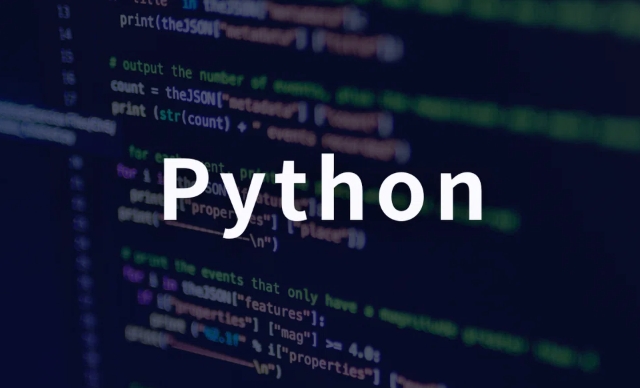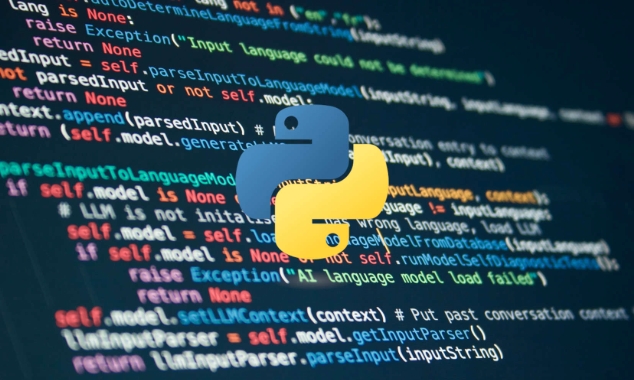The Mixin class is a class in Python that is used to add functionality to other classes but cannot be used independently. Its core purpose is to enhance the behavior of the class by providing reusable methods without forcing the formation of a "is-a" relationship. For example, LogMixin can provide logging capabilities for Database classes, but this is not the primary identity of Database. The best scenarios for using Mixin include: when the code appears repeatedly in multiple unrelated classes, when you want to separate the focus (such as decoupling the log logic from the business logic), and when you need to add non-core optional features. When writing Mixin, you should follow the following steps: 1. Create a class that provides only specific methods; 2. Do not expect it to be used alone, but rather combined with other classes; 3. In Python 3, object is usually used as the base class. Although Mixin combines through multiple inheritance, unlike traditional inheritance, it emphasizes the reuse of behavior rather than the identity definition of classes. It should be noted that if two classes always rely on the same core functionality, it is more suitable to use conventional inheritance.

A mixin class in Python is a type of class means to add functionality to other classes, but not meant to stand on its own. Think of it like a helper or plug-in — it provides reusable methods that can be mixed into other classes without implying a strict "is-a" relationship.

Unlike traditional inheritance where a subclass is a specialized version of its parent, a mixin just adds specific behaviors. This makes them especially useful when you want to share code across unrelated classes.
What Makes a Mixin Different from a Regular Base Class?
Mixins are often small and focused on doing one thing well. Here's how they differ:

- Purpose : A base class usually defines the core identity of a subclass (like
Carinheriting fromVehicle). A mixin adds optional features (like adding logging or caching behavior). - Usage : Mixins are typically used to avoid repeating code across multiple classes.
- Inheritance : Mixins are often combined with other classes using multiple inheritance, but they don't require being the top-level parent.
For example:
class LogMixin:
def log(self, message):
print(f"Log: {message}")
class Database(LogMixin):
def save(self):
self.log("Saving data") Here, LogMixin gives logging ability to Database , but Database isn't primarily a logger — it's just something it can do.

When Should You Use a Mixin?
Use mixins when:
- ? You find yourself duplicating the same methods across different classes.
- ? You want to separate concerns — for example, keep logging logic out of your main business logic.
- ? You need to add optional features that aren't central to the class's purpose.
Some real-world uses include things like serialization, caching, permissions, or even simple UI-related behaviors in frameworks.
Just remember: if two classes always need the same feature and it's central to their identity, regular inheritance might be better.
How Do You Write a Mixin in Python?
Writing a mixin is straightforward:
- Create a class that provides one or more methods.
- Don't expect it to be used by itself — it's designed to be combined.
- Typically, use
objectas a base class in Python 3.
Example:
class DebugMixin:
def debug_info(self):
attrs = {key: value for key, value in self.__dict__.items() if not key.startswith('_')}
return f"{self.__class__.__name__}: {attrs}"Then mix it in:
class Product(DebugMixin):
def __init__(self, name, price):
self.name = name
self.price = price
p = Product("Chair", 99.99)
print(p.debug_info()) # Output: Product: {'name': 'Chair', 'price': 99.99}This keeps the debug output logic reusable across many classes without duplication.
Most people start mixing in utility functions once they get comfortable with inheritance. Just keep your mixins focused and test them where they're used — because they're not full classes on their own, bugs can sometimes pop up only when combined with others.
Basically that's it.
The above is the detailed content of What is a mixin class in Python?. For more information, please follow other related articles on the PHP Chinese website!

Hot AI Tools

Undress AI Tool
Undress images for free

Undresser.AI Undress
AI-powered app for creating realistic nude photos

AI Clothes Remover
Online AI tool for removing clothes from photos.

Clothoff.io
AI clothes remover

Video Face Swap
Swap faces in any video effortlessly with our completely free AI face swap tool!

Hot Article

Hot Tools

Notepad++7.3.1
Easy-to-use and free code editor

SublimeText3 Chinese version
Chinese version, very easy to use

Zend Studio 13.0.1
Powerful PHP integrated development environment

Dreamweaver CS6
Visual web development tools

SublimeText3 Mac version
God-level code editing software (SublimeText3)

Hot Topics
 How does Python's unittest or pytest framework facilitate automated testing?
Jun 19, 2025 am 01:10 AM
How does Python's unittest or pytest framework facilitate automated testing?
Jun 19, 2025 am 01:10 AM
Python's unittest and pytest are two widely used testing frameworks that simplify the writing, organizing and running of automated tests. 1. Both support automatic discovery of test cases and provide a clear test structure: unittest defines tests by inheriting the TestCase class and starting with test\_; pytest is more concise, just need a function starting with test\_. 2. They all have built-in assertion support: unittest provides assertEqual, assertTrue and other methods, while pytest uses an enhanced assert statement to automatically display the failure details. 3. All have mechanisms for handling test preparation and cleaning: un
 How can Python be used for data analysis and manipulation with libraries like NumPy and Pandas?
Jun 19, 2025 am 01:04 AM
How can Python be used for data analysis and manipulation with libraries like NumPy and Pandas?
Jun 19, 2025 am 01:04 AM
PythonisidealfordataanalysisduetoNumPyandPandas.1)NumPyexcelsatnumericalcomputationswithfast,multi-dimensionalarraysandvectorizedoperationslikenp.sqrt().2)PandashandlesstructureddatawithSeriesandDataFrames,supportingtaskslikeloading,cleaning,filterin
 What are dynamic programming techniques, and how do I use them in Python?
Jun 20, 2025 am 12:57 AM
What are dynamic programming techniques, and how do I use them in Python?
Jun 20, 2025 am 12:57 AM
Dynamic programming (DP) optimizes the solution process by breaking down complex problems into simpler subproblems and storing their results to avoid repeated calculations. There are two main methods: 1. Top-down (memorization): recursively decompose the problem and use cache to store intermediate results; 2. Bottom-up (table): Iteratively build solutions from the basic situation. Suitable for scenarios where maximum/minimum values, optimal solutions or overlapping subproblems are required, such as Fibonacci sequences, backpacking problems, etc. In Python, it can be implemented through decorators or arrays, and attention should be paid to identifying recursive relationships, defining the benchmark situation, and optimizing the complexity of space.
 How can you implement custom iterators in Python using __iter__ and __next__?
Jun 19, 2025 am 01:12 AM
How can you implement custom iterators in Python using __iter__ and __next__?
Jun 19, 2025 am 01:12 AM
To implement a custom iterator, you need to define the __iter__ and __next__ methods in the class. ① The __iter__ method returns the iterator object itself, usually self, to be compatible with iterative environments such as for loops; ② The __next__ method controls the value of each iteration, returns the next element in the sequence, and when there are no more items, StopIteration exception should be thrown; ③ The status must be tracked correctly and the termination conditions must be set to avoid infinite loops; ④ Complex logic such as file line filtering, and pay attention to resource cleaning and memory management; ⑤ For simple logic, you can consider using the generator function yield instead, but you need to choose a suitable method based on the specific scenario.
 What are the emerging trends or future directions in the Python programming language and its ecosystem?
Jun 19, 2025 am 01:09 AM
What are the emerging trends or future directions in the Python programming language and its ecosystem?
Jun 19, 2025 am 01:09 AM
Future trends in Python include performance optimization, stronger type prompts, the rise of alternative runtimes, and the continued growth of the AI/ML field. First, CPython continues to optimize, improving performance through faster startup time, function call optimization and proposed integer operations; second, type prompts are deeply integrated into languages ??and toolchains to enhance code security and development experience; third, alternative runtimes such as PyScript and Nuitka provide new functions and performance advantages; finally, the fields of AI and data science continue to expand, and emerging libraries promote more efficient development and integration. These trends indicate that Python is constantly adapting to technological changes and maintaining its leading position.
 How do I perform network programming in Python using sockets?
Jun 20, 2025 am 12:56 AM
How do I perform network programming in Python using sockets?
Jun 20, 2025 am 12:56 AM
Python's socket module is the basis of network programming, providing low-level network communication functions, suitable for building client and server applications. To set up a basic TCP server, you need to use socket.socket() to create objects, bind addresses and ports, call .listen() to listen for connections, and accept client connections through .accept(). To build a TCP client, you need to create a socket object and call .connect() to connect to the server, then use .sendall() to send data and .recv() to receive responses. To handle multiple clients, you can use 1. Threads: start a new thread every time you connect; 2. Asynchronous I/O: For example, the asyncio library can achieve non-blocking communication. Things to note
 How do I slice a list in Python?
Jun 20, 2025 am 12:51 AM
How do I slice a list in Python?
Jun 20, 2025 am 12:51 AM
The core answer to Python list slicing is to master the [start:end:step] syntax and understand its behavior. 1. The basic format of list slicing is list[start:end:step], where start is the starting index (included), end is the end index (not included), and step is the step size; 2. Omit start by default start from 0, omit end by default to the end, omit step by default to 1; 3. Use my_list[:n] to get the first n items, and use my_list[-n:] to get the last n items; 4. Use step to skip elements, such as my_list[::2] to get even digits, and negative step values ??can invert the list; 5. Common misunderstandings include the end index not
 Polymorphism in python classes
Jul 05, 2025 am 02:58 AM
Polymorphism in python classes
Jul 05, 2025 am 02:58 AM
Polymorphism is a core concept in Python object-oriented programming, referring to "one interface, multiple implementations", allowing for unified processing of different types of objects. 1. Polymorphism is implemented through method rewriting. Subclasses can redefine parent class methods. For example, the spoke() method of Animal class has different implementations in Dog and Cat subclasses. 2. The practical uses of polymorphism include simplifying the code structure and enhancing scalability, such as calling the draw() method uniformly in the graphical drawing program, or handling the common behavior of different characters in game development. 3. Python implementation polymorphism needs to satisfy: the parent class defines a method, and the child class overrides the method, but does not require inheritance of the same parent class. As long as the object implements the same method, this is called the "duck type". 4. Things to note include the maintenance






